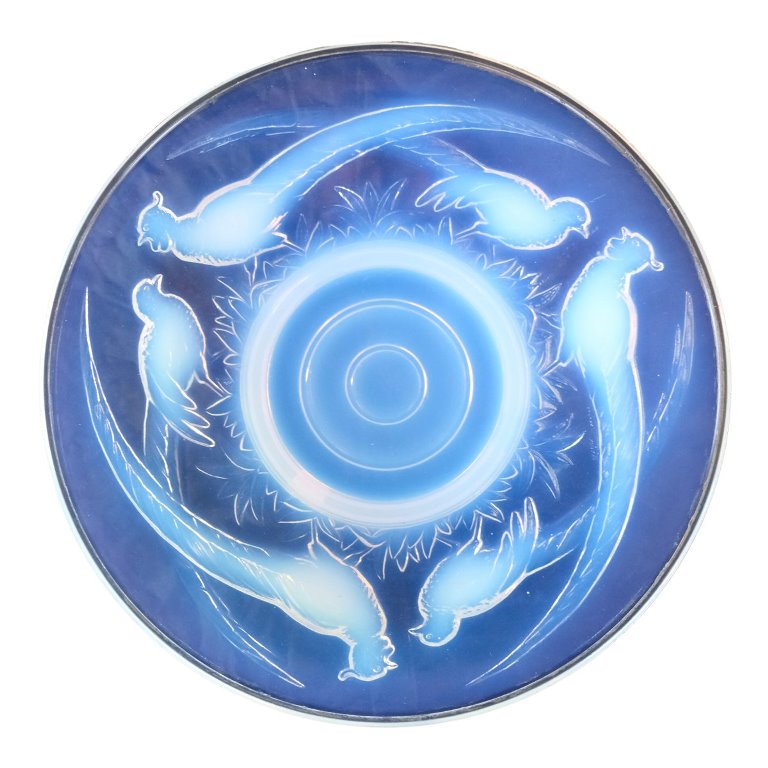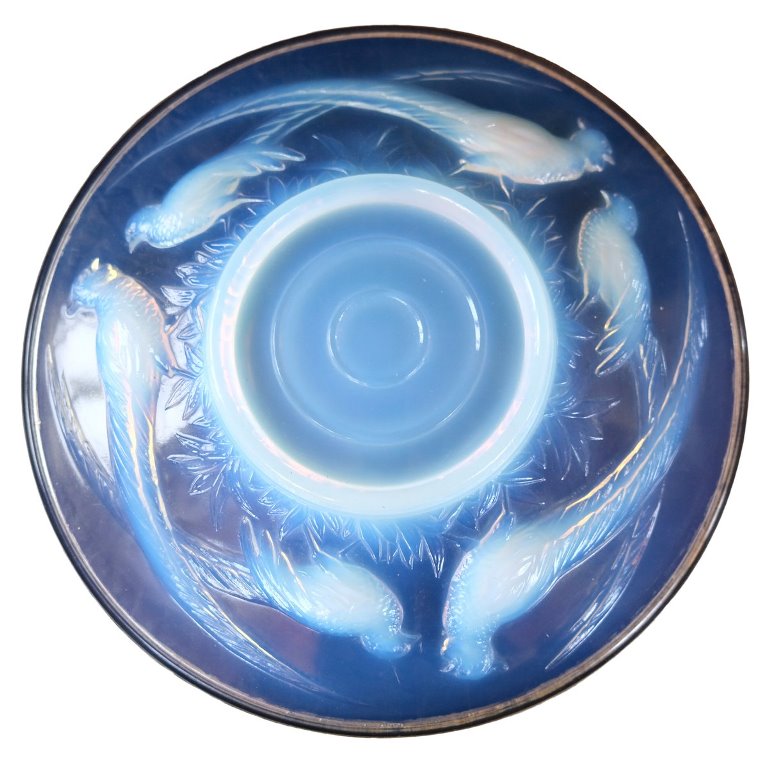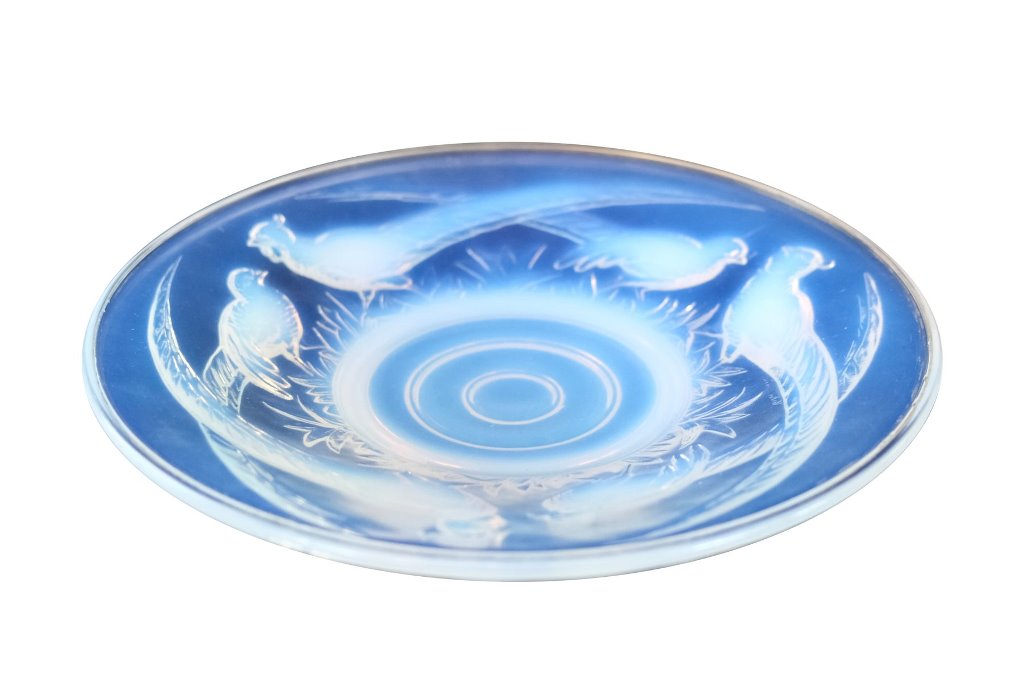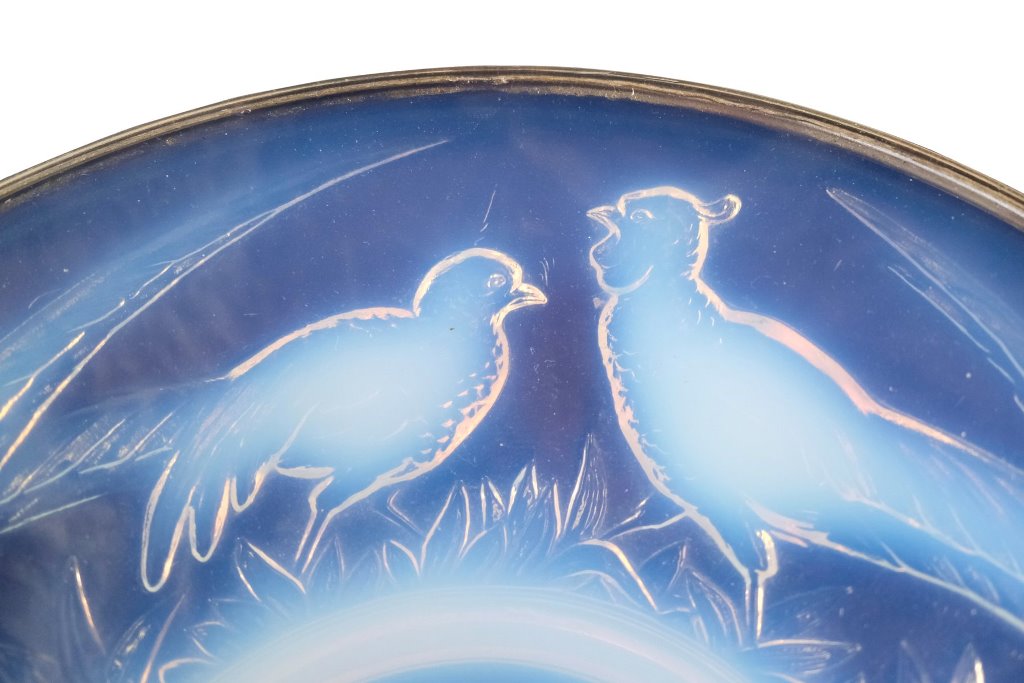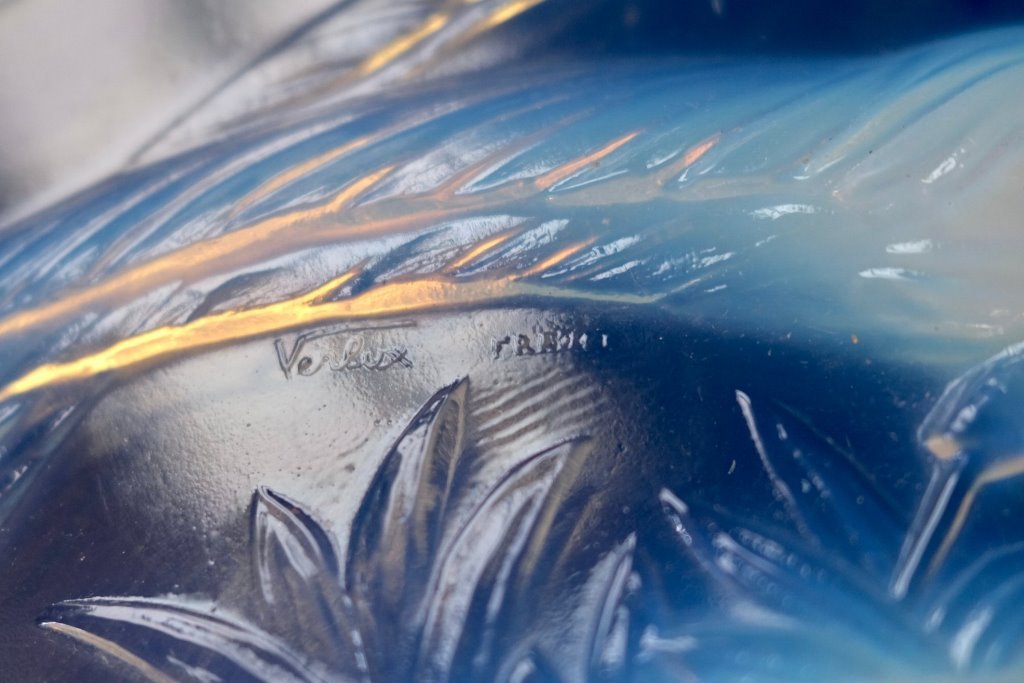Peacock bowl signed by Verly’s
Nr. 2308 | 2.140,-- Euro
Peacock bowl signed by Verly’s
Art Deco bowl made of opaline glass, 1930 Signed : Verly’s,France Three-part peacock relief in opaline glass…
Art Deco opal glass bowl, 1930
Signed : Verly’s,France
Three-part peacock relief in opal glass.
The back of the shell is matted by acid etching and the most raised parts are hand polished.
Height: 6 cm
Diameter: 30 cm
Price: 2.140,– €
(including 19% VAT that is deductible)
Peacock bowl signed by Verly’s
Verly Glass Production was a French glass factory that was active in the 1930s. Originally founded in the 18th century, the company specialized in the production of handcrafted glass. However, during the 1930s, under the leadership of the famous glass designer Etienne Bouchaud, Verly shifted towards the production of machine-made glass.
Verly’s glass products during this time were characterized by high quality and elegant design. They were often decorated with floral and animal motifs etched into the glass using etching techniques. Verly glass was very popular among wealthy customers in Europe and the United States and was frequently exhibited at shows and fairs. Although production was halted due to World War II, Verly glass products are highly sought after by collectors and design enthusiasts today due to their beauty and rarity.
Opal glass is a type of milk glass made by adding fluoride compounds to reduce the transparency of the glass and make it opaque. In the Art Nouveau style, opal glass was often used for lampshades, vases, and other decorative objects.
The production of opal glass in the Art Nouveau style began in the late 1880s and lasted until World War I. During this time, glassmaking became an important part of the arts and crafts movement. The production of opal glass required high craftsmanship and knowledge of the chemical composition of glass.
The production of opal glass began with melting raw materials such as quartz sand, soda, and limestone in a furnace. Fluoride compounds such as calcium fluoride or sodium fluoride were then added to make the glass opaque. The glass was then shaped and decorated, often using etching or engraving techniques.
In the Art Nouveau style, floral patterns and organic shapes were popular and were often integrated into the design of opal glass objects. A well-known example of opal glass in the Art Nouveau style is the Tiffany lamp, designed by Louis Comfort Tiffany and made from a variety of colored opal glass.
The production of opal glass in the Art Nouveau style was an important part of the artistic movement that shaped the 19th and early 20th centuries. Today, opal glass is still popular for decorative purposes and is often used in art and crafts.
Art Deco at RSA Wiesbaden
You can find more Art Deco cabinets, Art Deco chests of drawers and Art Deco lamps in my shop in Wiesbaden. Regine Schmitz-Avila – your specialist for French Art Deco furniture and art objects from around 1930.
